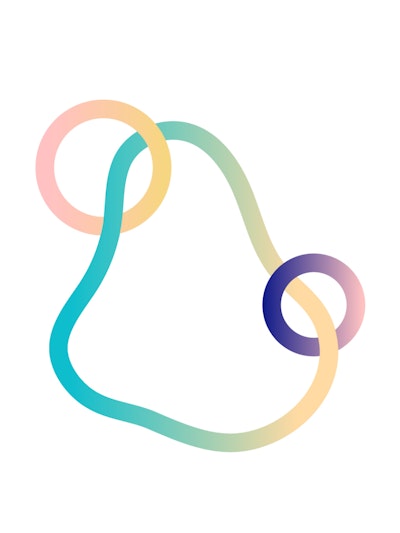Guest article
Building connections across distributed teams
Author and Future of Work consultant Brian Elliott dives into the ways organisations can improve connection, both physically and virtually
Written by: Brian Elliott
29 feb. 2024
5 minutes
We live in an age of distributed work. The vast majority of teams sprawl across regions, not just floors of buildings. For example, Microsoft went from 61% co-located to 66% spread across cities post-pandemic. Requiring people to come back into offices to connect with their teams no longer fits this new reality.
When people do come back, they're also often finding offices are not fit for their needs. Fixed rows of desks and meeting rooms go largely unused, furniture is unergonomic, and team workshops and gathering spaces can be difficult to book.
“Virtual alone” doesn’t work – ask any of the remote-first companies how they fared during the pandemic when they couldn’t bring their teams together. But too many companies cut back on travel budgets at a time when teams desperately need to forge connections.
So, what’s the path forward?
Building connection for teams
Physical gatherings
Team-level gatherings forge deeper connections and are essential to team health and employee engagement. Software provider Atlassian studied their teams that gathered quarterly and found that employee engagement shot up dramatically and stayed there for about four to five months.
Best practices include concepts such as:
Minimum guardrails ensuring that all employees are with their team, functional group, or company at least quarterly.
Biannual gatherings for functional teams traded off with biannual for cross-functional teams.
Ensuring that quarterly or less frequent gatherings are at least 50% “social” in nature: team-building exercises, meals together, or volunteer activities.
The onsite is the new offsite. We see evidence of this in recent MillerKnoll research, which found that travel to company locations in the last two years now nearly equals travel to visit customers (35.5% vs 36.1%, respectively). This leads travel to convention and hotel venues. The same study found evidence that people’s desire to travel increases for “events” versus “meetings”.
Virtual connection
Many of the best practices around team connection that we outlined in the book How the Future Works can be done online or in person. Concepts like personal user manuals – sharing your work style, preferred hours, and background – and using icebreakers to kick off staff meetings – work regardless of location.
It’s also important to think about the design of our physical spaces and how we use them. The classic long, rectangular table with senior people at one end and the screen at the opposite end should be replaced by setups that allow everyone to see those around the room, and let everyone dialled in hear equally. For larger group sessions, that means multiple screens, microphones, and cameras.
In addition, with two generations of digital natives in our workforces, leaders can and should turn to younger team members for ideas.


Building connection for weak ties
Flexible workspaces
We’re well past the stage where “wait and see” is the right answer to office redesign. In the US, office utilisation is largely in line with the average of company workplace policies; about half of what they were pre-pandemic. There are similar trends in Canada, the UK, and Australia. While less so in other countries, from MillerKnoll research we see that even in countries like India and Japan, only 61% and 63% of companies (respectively) are in the office full-time.
The primary role of offices has changed from being a place for individual work to being a place for collaboration and connection. We need spaces that are flexible to meet shifting team demands, and more interactive to boost casual collisions and conversations within and between teams.
Bonding virtually
Virtual communities based on interests are a great way to build ties across teams and functions – the “weak ties” we’ve been missing. Leveraging tools like Microsoft Teams and Slack builds channels for conversations that span an organisation.
A few examples:
Employee resource groups
Channels for members of a group to connect and support each other are critical for groups that often are too small locally but sizable globally.
Personal interests
“Cats” and “dogs” are classics, but there are so many more. For example, one employee started a “sneakerheads” channel for five friends in New York City that went viral, eventually connecting hundreds of employees from offices worldwide.
Work topics
Encouraging people to share what they’re reading, seeing, and hearing about topics related to the business can also spark new ideas that cut across diverse groups and perspectives.

In-person connection
Strengthening local and global communities is a great way to build employee connection to the firm and weak ties across functions. Encourage not just the local office weekly common meal, but local community involvement through group volunteer activities. Think past happy hour and into programming that people value, like brown bag lunches hosted by different functions and leaders and in-office educational programmes.
Don’t have an office in a locale with 20 or more employees? Encourage and support them to do team gatherings locally, find a local “community manager” to help create social fabric, and tie in executive travel to forge connections locally.
We live in a world of distributed work, and there’s no going back. Digital tools and virtual communities will continue to play a key role in building connections. It’s also time to ask whether the physical spaces we have are fit for our purposes in this distributed future … and present.
About the author
Brian Elliott spent 30 years leading teams and building companies as a startup CEO, product leader at Google, and executive leader at Future Forum. He recently co-founded McElliott Advisors, which advises leaders on the Future of Work. He has written extensively on topics related to work for publications including Harvard Business Review, Fortune, and The Economist, and he is the co-author of How The Future Works: Leading Flexible Teams to Do the Best Work of Their Lives (© 2022, Wiley).